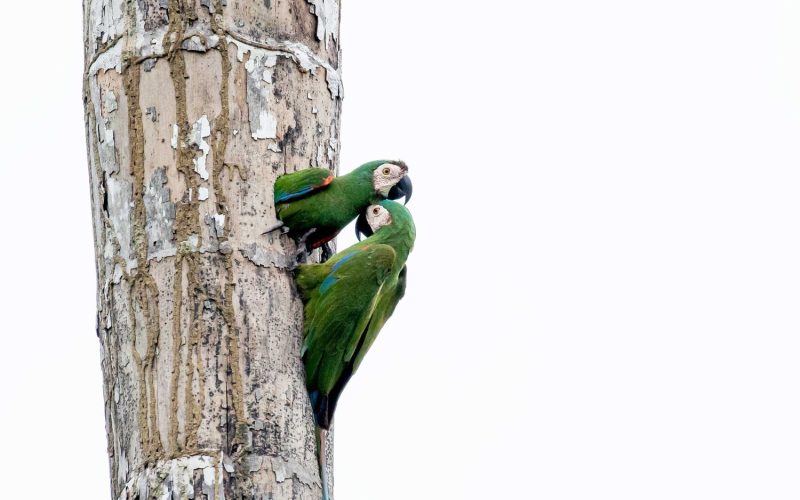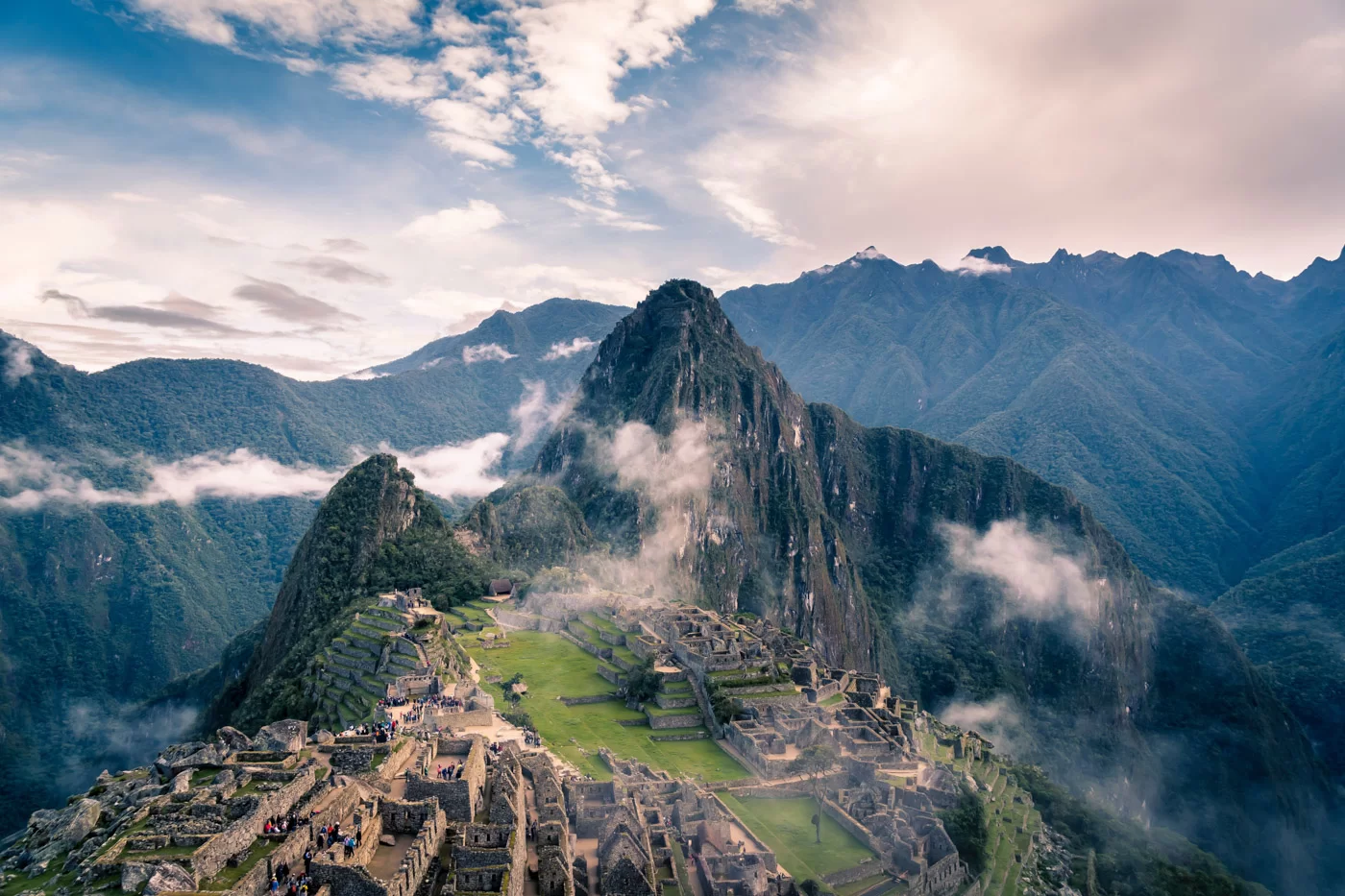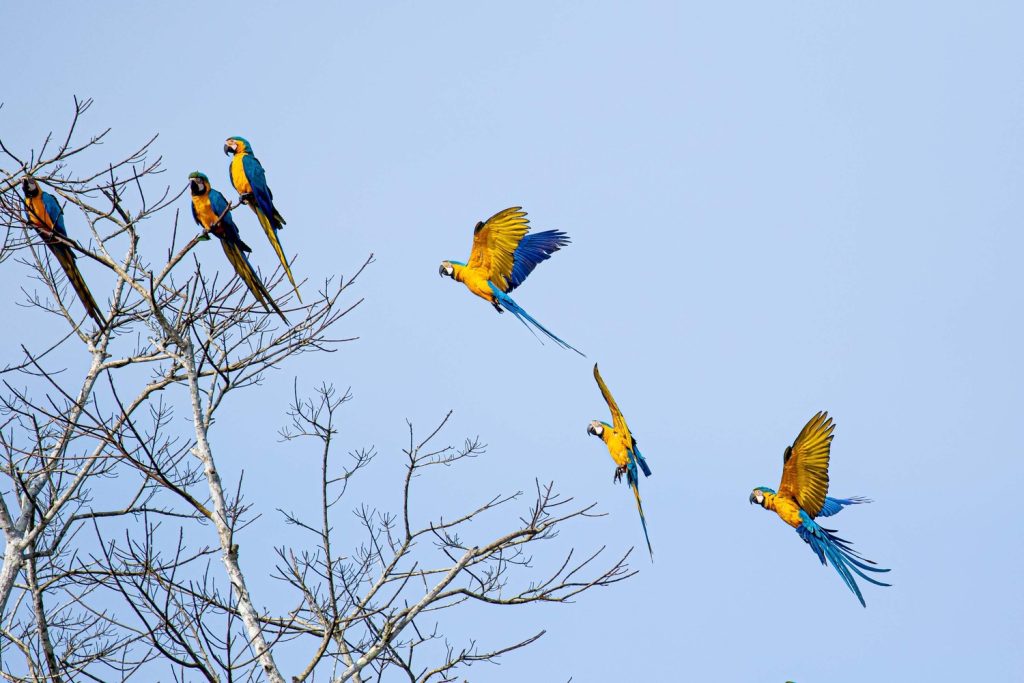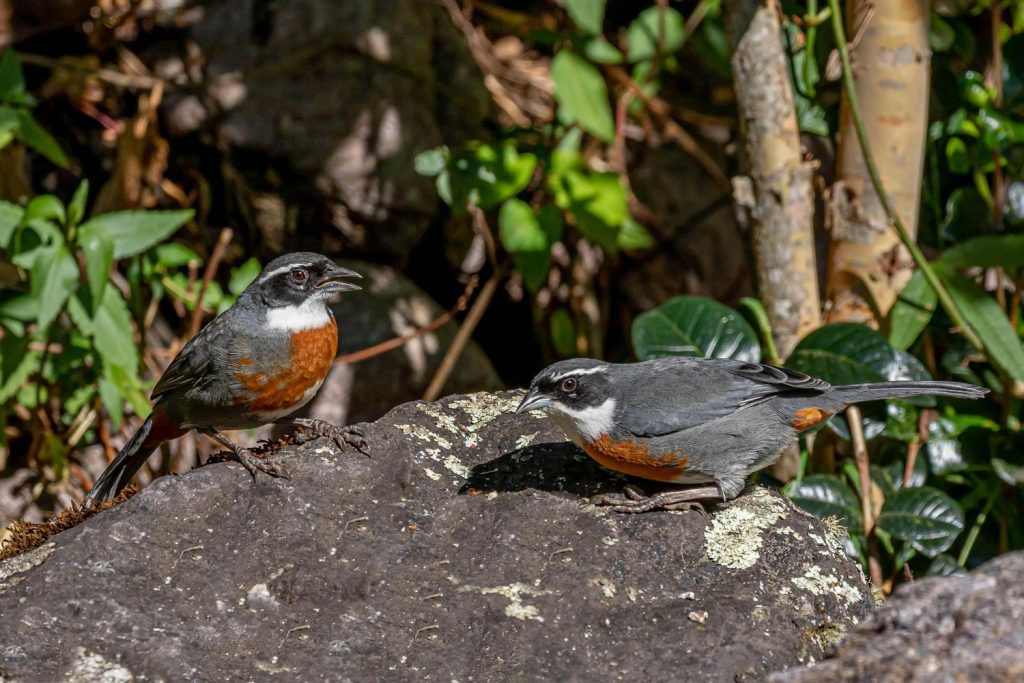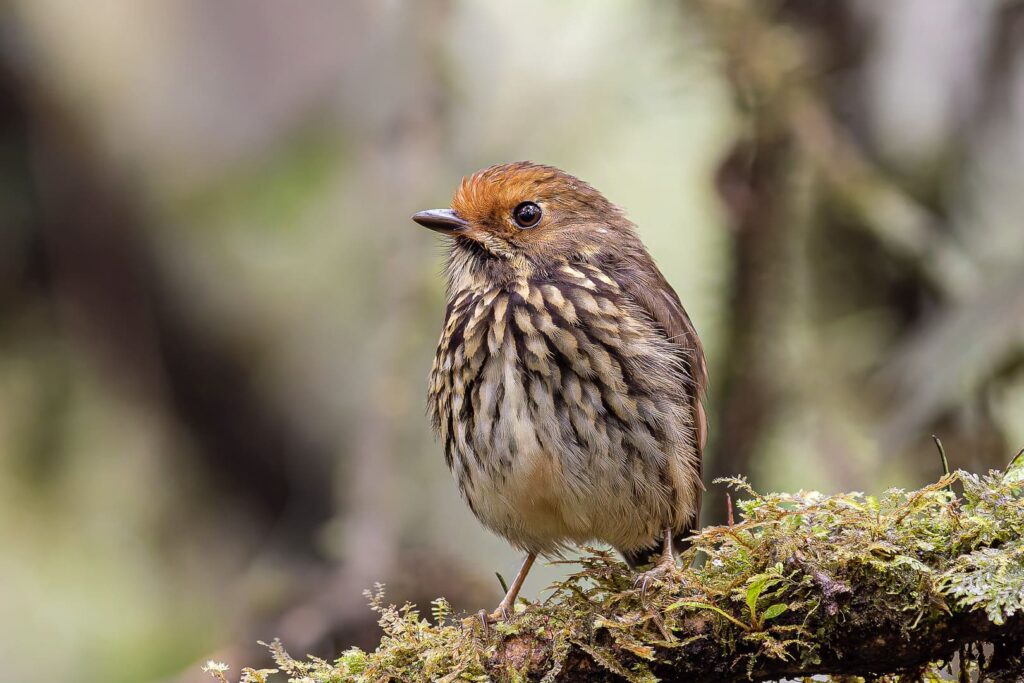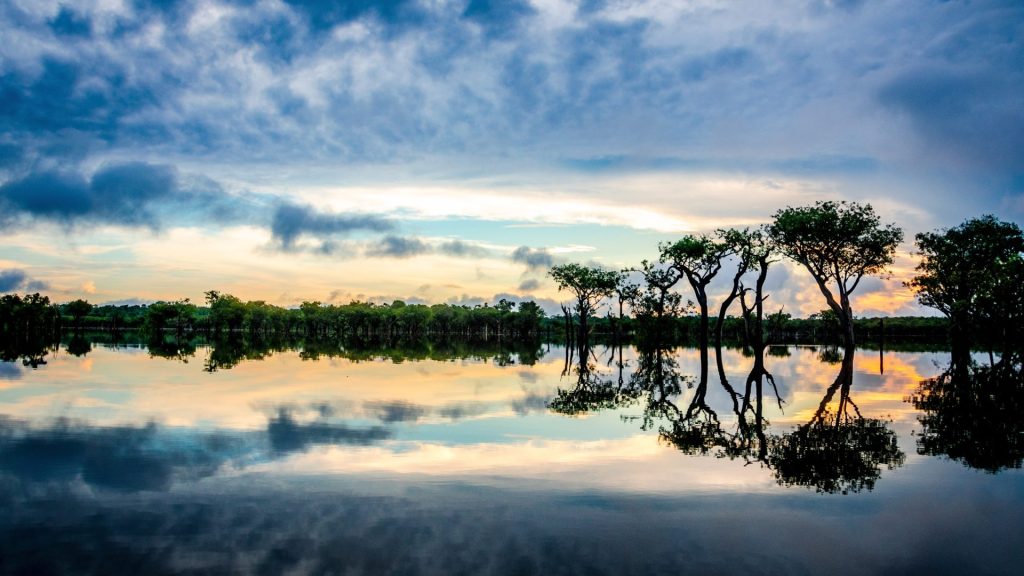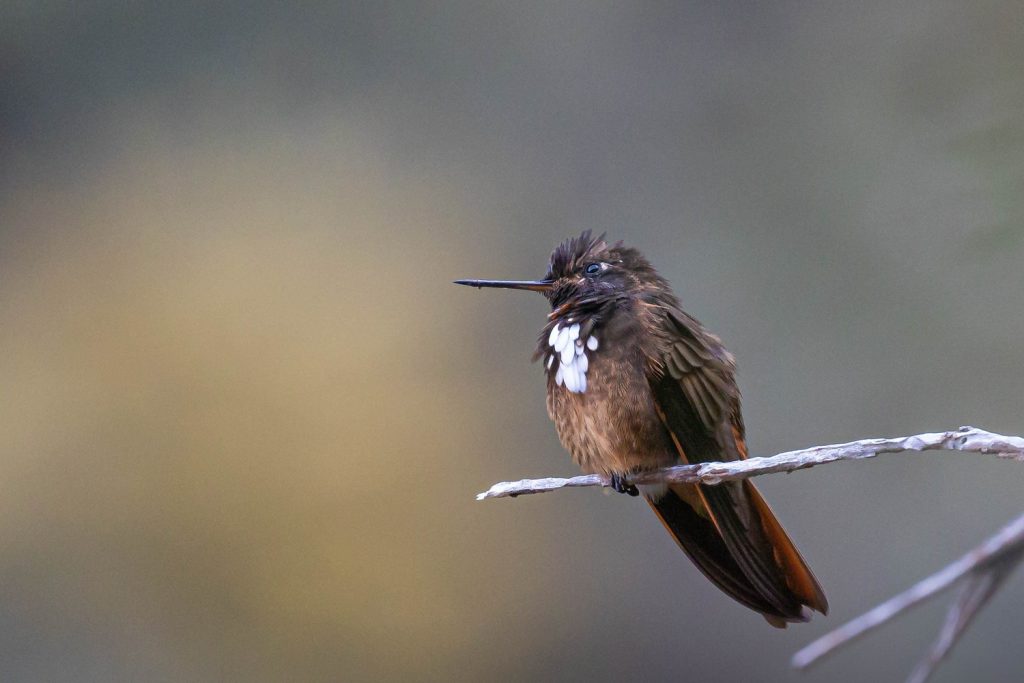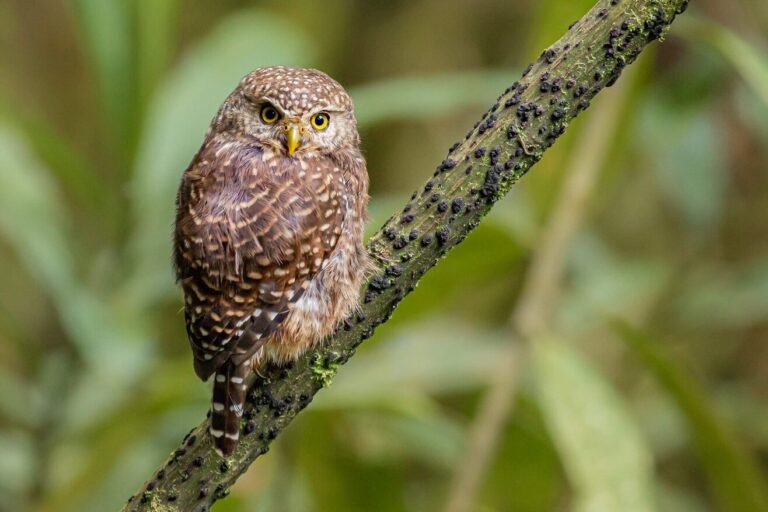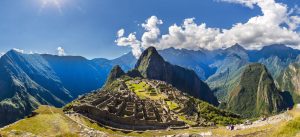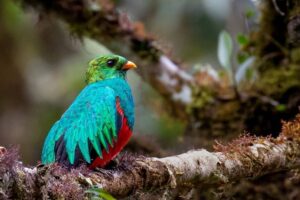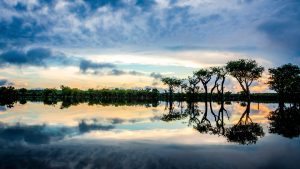BIRDING MANU ROAD, OXBOW LAKES AND MACAW CLAYLICK
- From
- Trip Type
- Activities
- Trip Duration
- Group Size
- Habitats Covered
- Trip Outline
- Itinerary
- Trip Includes
- Gallery
- FAQ
Trip Outline
This trip is designed for serius birding on the majority of habitats of the east slope of Andes towards the Amazon basin where the Andes Mountains cradle the Amazon rainforest. It is here where pristine life unfolds and birdwatching becomes an extraordinary journey through a myriad of habitats. Welcome to our immersive adventure where you’ll have the chance to explore intermountain valleys, highland lakes, elfin forests, cloud forests, foothills and amazon lowlands and more, in one of the greatest birding trips in the world.
Our trip begins in the high Andean plateau, where intermountain valleys and highland lakes provide a backdrop with andean waterfowl that thrive in this challenging environment. As we descend to the elfin forests, the enchanting world of hummingbirds and mixed-species flocks awaits. The cloud forests, wrapped in ethereal mists, host a diversity. In the foothills, the collision of lowland and highland species creates a birding spectacle like no other. Boat rides on rivers and oxbow lakes provide a chance to witness birds of open areas while the forest interior of the rainforest, varzea, and terra firme promise encounters of skulkers with uncomparable diversity. Canopy towers grants you a unique perspective on life high in the treetops, where canopy mixed flocks, parrots, and raptors take flight.
This adventure is not just about birds; it’s about immersing yourself in the natural world of the Manu Biosphere Reserve. As we explore this protected paradise, you’ll have great chances to spot ten species of primates , as well as elusive jaguars that prowl river banks. Manu’s reserved and pristine zones provide the backdrop for this unparalleled experience, where conservation and exploration go hand in hand.
Itinerary
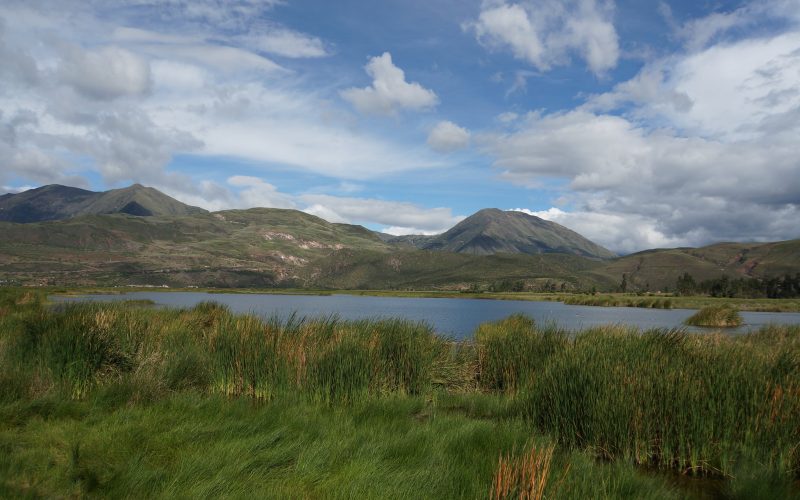
Cuzco - Wayquecha lodge.
The journey starts early in the morning in Cusco, the capital of the Inca Empire. The road takes us first to Huacarpay, a Ramsar Wetland, which provides habitat for a wide variety of local and migratory species. Some of the specialties include waterfowl such as Yellow-billed Pintail, Puna Teal, Plumbeous Rail, Andean Duck, Andean Tinamou, White-tufted Grebe, and the reeds may show us Many-colored Rush-tyrant and Wren-like Rush-bird. The lake surroundings also hold nicotiana flowers, which attract Black-throated Flowerpiercer, Black-tailed Trainbearer, Giant Hummingbird, and the spectacular and endemic Bearded Mountaineer. Finally, the xerophytic vegetation holds the endemic Rusty-fronted Canastero, Streak-fronted Thornbird, Puna Tinamou, and the very rare Darwin's Nothura, among several others.
At mid-morning, we will get back to the road, driving along puna habitats where Slender-billed Miner, Peruvian Sierra-finch, Andean Flicker, Variable Hawk, etc.
At midday, we will finally get back to the Aqjanaco pass, the entrance to Manu National Park, for a picnic lunch, leaving dry intermountain valleys and starting our way towards more lush vegetation and higher diversity. Aqjanaco presents access to one of the most pristine and delicate habitats, the Elfin forest. The opportunities here are excellent for specialties such as the Endemic Urubamba & Red-and-white Antpittas, Puna Thistletail, Puna & Diademed Tapaculos, Moustached Flowerpiercer, Scribble-tailed Canastero, and the spectacular Gray-breasted Mountain-Tanager. Finally, the mixed flocks here hold colorful Tanagers like Scarlet-bellied & Hooded Mountain-tanagers, Golden-collared & Grass-green Tanager, Pearled Treerunner, Yunga's Pygmy Owl, Grass Wren, and many others.
We will spend our night at Wayquecha Lodge
Middle Manu Road
Wayquecha is located in the Elfin forest. Chilly and humid, the place is always “on” clouds. Very little is known about this delicate habitat. At 3,000 meters elevation, the place is known, not only for the birds, but several sp. of orchids are found here too. The garden regular visitors are Long-tailed Sylph, Scaled and Tyrian Metaltail, Shinning Sunbeam, “Cuzco”Starfrontlet (Split from Violet-fronted Starfrontlet). The bird life here includes Hooded Tinamou, Stripe-faced Woodquail, Semi-Collared Hawk, Black-and-chestnut Eagle, Masked Trogon, Crimson Mantled Woodpecker, Puna thistletail, Band-tailed Fruiteater, Red and White Antpitta (E), Leymebamba Antpitta, Trilling Tapaculo, White-throated and White-banded Tyrannulet, Inca Flycatcher (E), Golden-headed Quetzal, White-collared Jay, Masked Flowrepiercer, Hooded & Scarlet-bellied Mountain-tanager, Golden-Collared, Superciliared (Urubamba) Hemispingus, Tanager, Pale-legged Warbler, Black-faced Brush-Finch, Dusky-green Oropendola, Mountain Cacique, etc. This area is home for Spectacled Bear and Culpeo (Andean fox) as well.
Night at Cock of the Rock.
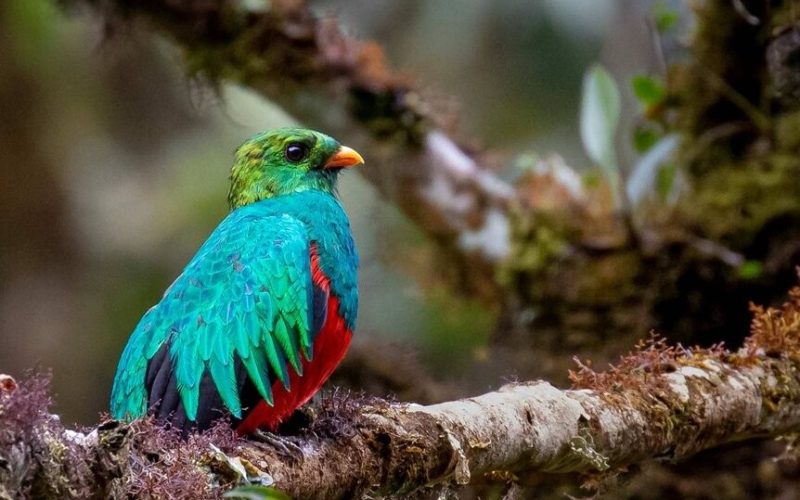
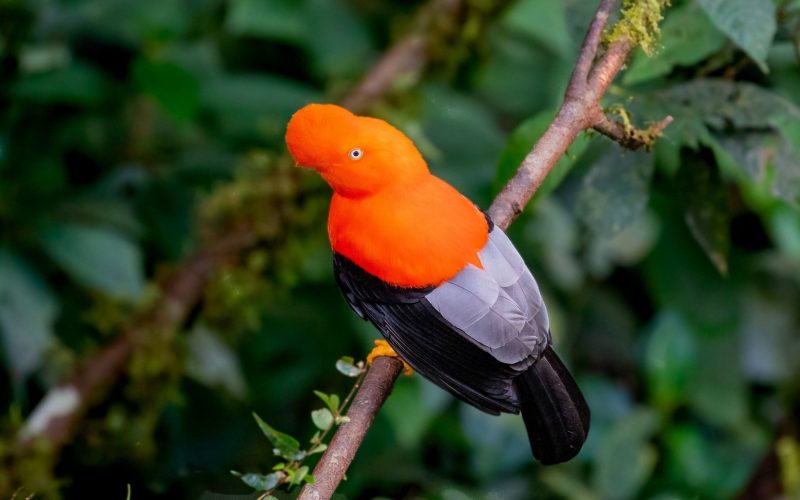
Cock of the Rock Lodge
We will spend the day around San Pedro, located at 1500 meters elevation, lower, warmer and more confortable than Wayquecha, this is the Cloud Forest itself. This place is particularly special for it´s Cock of the Rock Lek, a wonderful show where groups of bright and colorful males gather here to display attracting dull females. There is a plattaform conveniently placed at the Lek to enjoy it. Other wildlife speciallities here are: Brown Tinamou, Rufescent-Screech-Owl, Buff-thighed Puffleg, Rufous-booted Raquet-tail, Peruvian Piedtail (E), Violent-fronted Brilliant, Speckled Hummingbird, Blue-banded Toucanet, White-backed Fire-eye, Stripe-chested Antwren, White crowned Tapaculo, Fulvous-breasted Flatbill, Cinnamon-faced Tyrannulet, Crested Quetzal, Yellow-rumped antwren, Yellow-breasted Warbling Antbird, Yungas Manakin, Cereulean-capped Manakin, Inca Jay, White-capped Dipper, Andean Solitaire, Olive Finch, Two-banded Warbler, Carmiol´s Tanager. Among a large list of multi-colored Tanagers and others. In addition, a Tanager new for science have been reported and photographed. The restricted Wooly Monkey lives here as well as the Brown Capuchin Monkeys.
Night at Cock of the Rock
Foothills - Manu Biolodge (Villa Carmen)
After breakfast we will head towards the andean foothills where we can find White Hawk, Military Macaw, Blue-headed Macaw, Great Potoo, Lanceolated Monklet, Rufous-capped Nunlet, Yellow-billed Nunbird, Chestnut-backed Antshrike, Yellow-breasted Warbling-antbird, Blackish Antbird, Black-backed Tody-flycatcher (E), Ornate Flycacher, Mottle-backed Elaenia, Fiery-capped Manakin and many more.
We will arrive to the next lodge for afternoon, the former Villa Carmen is now renewed as one of the most important biological station and open for tourism as Manu Biolodge, 3,000 hectares of preserved forest at 500 masl at the Foothills of Manu National Park. Night,Urubamba Titi and Spider Monkeys are also possibilities. Villa Carmen Lodge stands as an oasis of comfort and natural beauty. Surrounded by the lush cloud forests and foothills of Manu National Park, this lodge offers a tranquil retreat and excellent activies for birding with its charming wooden cabins that blend seamlessly with the landscape.
Night at Manu Biolodge (Villa Carmen)
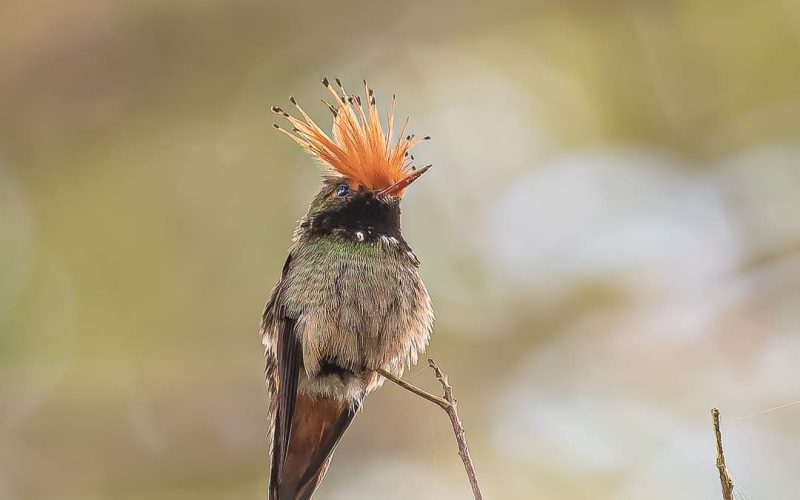
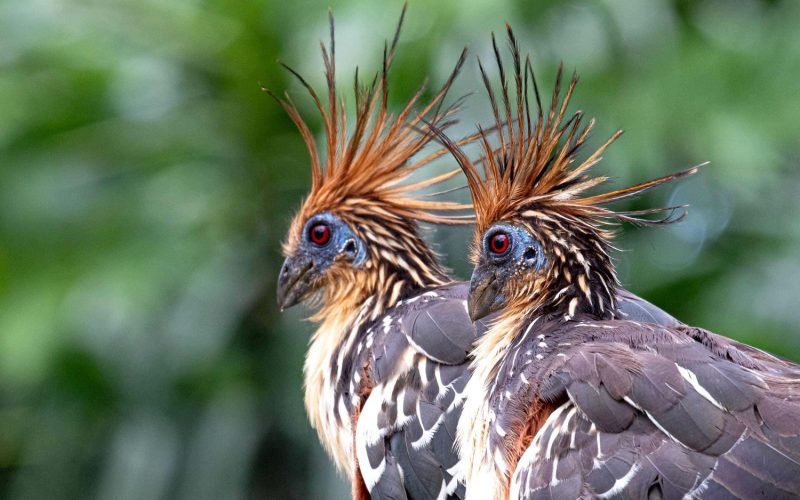
Oxbow Lake & Hummingbird Feeders
We will spend the mourning birding at the lodge which permits access to great bamboo patches where Rufous-headed Woodpecker, Manu Antbird, Rufous-vented Ground-Cuckoo, White-lined Antbird, White-cheeked Tody-flycatcher, Bamboo Foliage-gleaner and the several trails in the lodge guarantee good birding of restricted species such as Fine-barred Piculet, Scarlet-hooded Barbet, Foothill Antwren, Brownish-headed Antbird, Cabani´s Spinetail among others.
After lunch we leave our lodge towards Machuwasi Oxbow lake, where Hoatzin, Blackish Rail, Gray-cowled Woodrail, Riparian Antbird, Ladder-tailed Nightjar, Pale-eyed Blackbird, Black-Billed Seedfinch, etc. Additionally a garden hummingbird feeder holds White-necked Jacobin, Rufous-breasted Hermit, Black-throated Mango, Koepcke´s Hermit, Amazonian Antpitta and Rufous-sided Crake with feeders among several others. Red Howler and Spider Monkeys are also possibilities.
Night at Manu Biolodge (Villa Carmen).
Madre de Dios River
Short birding tieme after breakfast in a hummingbird feeder station where we have a great chance of Rufous-crested Coquette, Black-eared Fairy, Long-billed Starthroat, Buff-tailed Sicklebill, Gould ́s Jewelfront. Fruit feeders attract Lemon-throated Barbet, Thick-billed Euphonia, Green Honeycreeper, Blue & Yellow-bellied Dacnis, Turquoise, Yellow-bellied, Paradise & Spotted Tanager, Great Potoo and others with excellent chances for photography.
Later, we will head to Atalaya where we will start a boat ride for along the Madre de Dios with species such as Southern Lapwing, Anhinga, Little Blue-heron, Pied Plover, Little Ground-tyrant, etc.
We will arrive to Manu Wildlife Center at mid afternoon, where we will end our day at a canopy tower of 34 meters on an emergent tree over the rainforest Canopy. From up here, we have much better views of Blue-and-yellow, Scarlet, Red-and-Green Macaws, Toucans, Parrots, Black-bellied Cuckoo, Amazonian Pygmy-owl, Spangled Cotinga, Purple-throated Fruitcrow, Western Striolated-Puffbird and others such as Slender-footed Tyrannulet, Gray-crowned Flatbill, Chestnut-shouldered Antwren, Chestnut-shouldered Antwren. All very hard to see from ground.
Night at Manu Wildlife Center
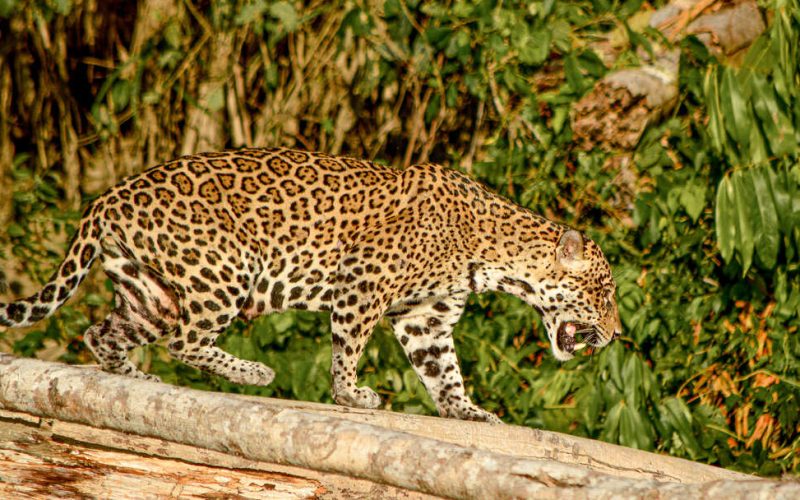
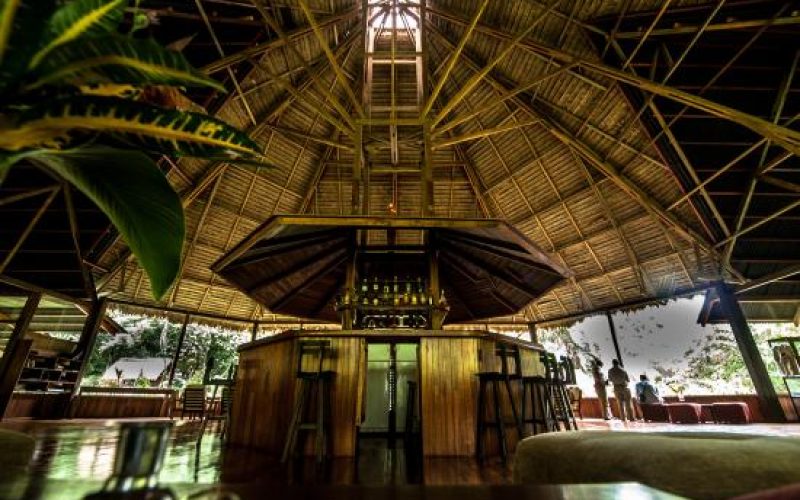
Full days at Manu Wildlife Center
We will spend two full days at Manu Wildlife Center, an emblematic lodge for birding in the Tropics. We have here a great system of trails especifically designed by and for birders, including creek and river sides, terra firme, bamboo, varzea, disturbed vegetation and tall mature forest. 20 minutes far from the lodge we can always have access to a Canopy Tower and after a hike we can find a Mammal claylick where Tapirs sights are common.
The canopy tower of 34 meters on an emergent tree over the rainforest Canopy. From up here, we have much better views of Blue-and-yellow, Scarlet, Red-and-Green Macaws, Toucans, Parrots, Black-bellied Cuckoo, Amazonian Pygmy-owl, Spangled Cotinga, Purple-throated Fruitcrow, Western Striolated-Puffbird and others such as Slender-footed Tyrannulet, Gray-crowned Flatbill, Chestnut-shouldered Antwren, Chestnut-shouldered Antwren. All very hard to see from ground.
Some species we can expect are Razor-billed Curassow, Festive Coquette, Great Jacamar, Pavonine Quetzal, White-throated Woodpecker, Golden-collared Toucanet,White-cheeked Tody Flycatcher, Black-tailed Leaftosser; Round-tailed, Blue-backed & Band-tailed Manakin, Red-billed Pied Tanager, Brazilian Tinamou, Dot-winged Antwren, Little Ground-tyrant, Royal Flycatcher, Rufous-fronted Antthrush but the possibilities are inmense.
Owling at the lodge is generally good with Crested, Mottled & Spectaled Owl and Ferruginous & Amazonian Pygmy-owl.
Nights at Manu Wildlife Center
Blanquillo Macaw Claylick & Oxbow Lake
We will leave at dawn for a short boat ride towards Blanquillo Macaw Clay Lick to witness one of the greatest spectacles of nature. A noisy congregation at a clay wall of several species of Psitascids. As soon as we arrive, we expect the smaller species such as Tui & Cobal-winged Parakeet already there, after some time larger parrots start coming with Blue-headed, White-bellied Parrot and Mealy & Yellow-crowned Amazon. Finally, after some time the largest members start coming, Red-and-green Macaws will delicately arrive in pairs and take some time for interaction. The hide is very comfortable to spend all that time with sits, table for breakfast and toilets. We will head later back to the lodge for lunch.
We have seen raptors and even jaguars and ocelots attempting to capture the Macaws.
Afternoon will be spent on Camungo Oxbow Lake with a wonderful canopy tower. Species here may include canopy mixedflocks, Least Grebe, Purple Gallinule, Slate-colored & Crane Hawk, Green-and-rufous & Amazon Kingfisher, Striped Woodcreeper, Band-tailed Antbird, Black-faced Cotinga, Spot-breasted Woodpecker, Limpkin, Silvered Antbird, Ladder-tailed Nightjar.
Night at Manu Wildlife Center
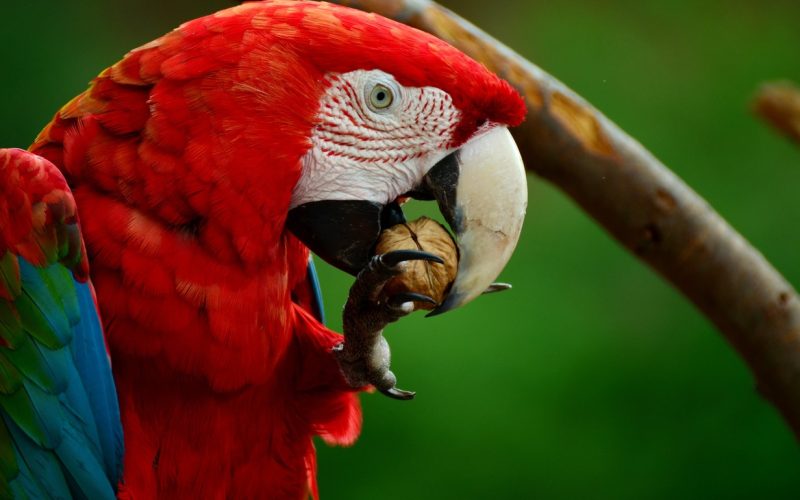

Puerto Maldonado
After an extra birding morning we will start the way out by boat and car, rejoining the civilization and drive towards Puerto Maldonado by the nice Transcontinental road which crosses the continent Pacific-Atlantic by Peru and Brazil. Our birding stops along the way may bring us Orinoco Goose, Black Skimmer, Yellow-billed and large-billed Tern, Picui Ground Dove, Crested & Southern Caracara, Undulated Tinamou, Brazilian Teal, Southern Lapwing, Point-tailed Palmcreeper, Butterfly Coquette, Inambari Woodcreeper, etc.
Night at Puerto Maldonado
Maldonado surroundings and OUT
After breakfast, we will spend our morning birding in the surroundings of Puerto Maldonado where we can get some specialities such as Purus and White-throated Jacamar, Black-faced Tanager, Grassland Sparrow, White-edged Flycatcher, Straight-billed Woodcreeper, Picui Ground-dove, etc.
Back to the hotel for a last shower and finish packing and transfer to the airport.
END OF SERVICES
